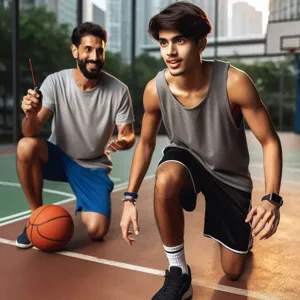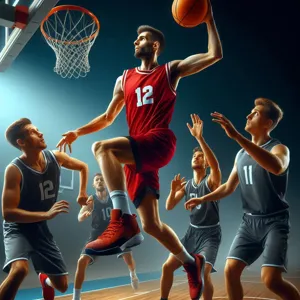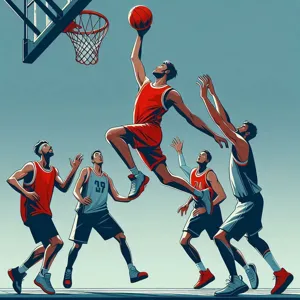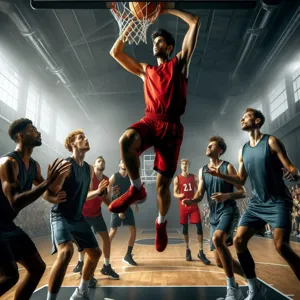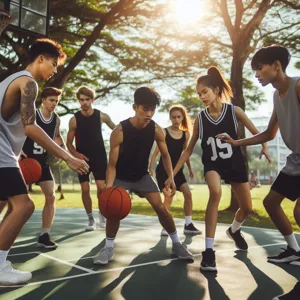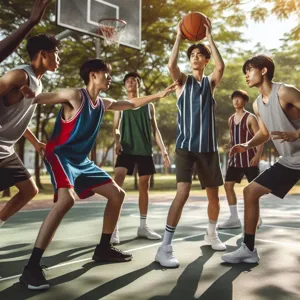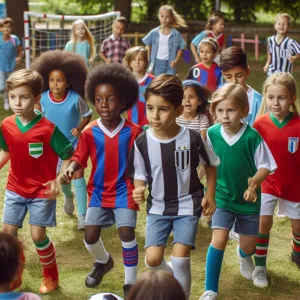Whether you’re a novice eager to hit the open road or a seasoned rider looking to refine your skills, the right motorbike training program can make all the difference in your riding journey.
With the thrill of freedom that comes from riding, it’s essential to ensure you have the proper knowledge and techniques to navigate the roads safely and confidently. In this blog post, we’ll explore the top motorbike training programs designed to cater to both beginners and experienced riders, highlighting key features, benefits, and what sets each program apart. From comprehensive classes that cover the fundamentals of motorcycle operation to advanced courses that delve into cornering techniques and emergency maneuvers, our curated list will help you choose the best fit for your skill level and riding aspirations. Get ready to rev your engines and embark on a learning adventure that will elevate your riding experience to new heights!
1. Introduction to Motorbike Training Programs

Motorbike training programs are essential stepping stones for both beginners and experienced riders looking to hone their skills and enhance their safety on the road. As the popularity of motorcycling continues to rise, so does the need for structured training that equips riders with the necessary knowledge and techniques to navigate the complexities of riding. From understanding the mechanics of a motorcycle to mastering advanced riding techniques, these programs cater to a wide range of skill levels and learning styles.
For beginners, motorbike training programs provide a solid foundation, focusing on the basics of motorcycle operation, traffic laws, and safety protocols. Participants learn how to handle a bike in various conditions, develop essential riding skills, and build confidence to take on the open road. Additionally, many programs include practical, hands-on training, allowing new riders to practice their skills in a controlled environment before venturing into real-world scenarios.
Experienced riders, on the other hand, may seek out training programs that delve into advanced techniques, such as cornering, braking strategies, and emergency maneuvers. These programs often emphasize the importance of risk management and situational awareness, equipping riders with the tools to make split-second decisions in challenging situations.
No matter where you are in your riding journey, enrolling in a motorbike training program is a proactive step toward becoming a more competent and confident rider. In this blog post, we’ll explore some of the top motorbike training programs available, highlighting their unique features, benefits, and what you can expect to gain from each. Whether you’re just starting out or looking to refine your skills, there’s a program tailored to meet your needs and ensure you hit the road with confidence.
2. Benefits of Enrolling in a Training Program
Enrolling in a motorbike training program offers a multitude of benefits that extend far beyond the basic learning of how to ride. For both beginners and experienced riders alike, these programs are designed to enhance skills, boost confidence, and ensure safety on the road.
One of the primary advantages of a training program is the structured curriculum it provides. Beginners will appreciate the step-by-step approach that covers everything from the fundamentals of motorcycle operation to the nuances of navigating different road conditions. This structure not only accelerates the learning process but also ensures that no crucial aspect of riding is overlooked. For experienced riders, advanced training modules can refine existing skills, teach new techniques, and introduce the latest riding strategies that can be crucial in modern traffic scenarios.
Safety is paramount in motorcycling, and training programs place a significant emphasis on this aspect. Participants learn about proper gear, hazard recognition, and defensive riding techniques, all of which contribute to safer riding experiences. In fact, many programs incorporate practical riding exercises that simulate real-life situations, giving riders the confidence to react appropriately when faced with unexpected challenges on the road.
Moreover, enrolling in a training program often leads to insurance benefits. Many insurers offer discounts for riders who have completed an accredited training course, as it demonstrates a commitment to safety and skill development. This could mean substantial savings over time, making the initial investment in training programs even more worthwhile.
Finally, training programs provide an opportunity to connect with fellow riders. Whether beginners or seasoned enthusiasts, participants can share experiences, tips, and camaraderie, fostering a sense of community that extends beyond the classroom or riding range. These connections can lead to lifelong friendships and potential riding partners, enriching the overall motorcycling experience.
In essence, enrolling in a motorbike training program is a smart choice for anyone looking to enhance their riding abilities while prioritizing safety and community engagement. Whether you’re just starting out or looking to sharpen your skills, there’s a program that can cater to your needs and set you on the path to becoming a more competent and confident rider.
3. Factors to Consider When Choosing a Training Program

Choosing the right motorbike training program is crucial, whether you’re a beginner eager to learn the ropes or an experienced rider looking to sharpen your skills. Here are several key factors to keep in mind that will help you make an informed decision.
**1. Accreditation and Reputation:** Start by investigating the program’s credentials. Look for training schools that are accredited by recognized motorcycle safety organizations. Check reviews and testimonials from previous students to gauge the program’s effectiveness and credibility. A reputable school will have a history of positive feedback and successful graduates.
**2. Course Content and Structure:** Different programs offer varying levels of instruction. For beginners, a comprehensive course that covers the basics of motorcycle operation, safety protocols, and essential riding techniques is vital. For seasoned riders, advanced courses focusing on specific skills like cornering, braking, and emergency maneuvers can provide the edge needed to enhance riding abilities. Review the syllabus and ensure it aligns with your learning goals.
**3. Instructors’ Experience:** The quality of instruction can greatly influence your training experience. Look for programs that employ certified instructors with extensive riding experience and teaching backgrounds. An experienced instructor not only imparts knowledge but also provides insights from real-world experiences, making the learning process more relatable and effective.
**4. Class Size and Student-to-Instructor Ratio:** Smaller class sizes often mean more personalized attention and better hands-on experience. Programs with a low student-to-instructor ratio can provide an environment where questions are encouraged, and individual challenges can be addressed more readily. This is particularly important for beginners who may need more guidance as they learn to navigate their first rides.
**5. Location and Facilities:** Proximity to your home can make a big difference in convenience and commitment to the program. Additionally, assess the facilities available—do they have a dedicated training area, quality equipment, and a safe environment for practice? Comprehensive facilities can enhance your learning experience and ensure safety during training.
**6. Cost and Value:** While price shouldn’t be the sole factor in your decision, it’s important to weigh the cost against the value provided. Look for programs that offer flexibility in payment plans or discounts for early registration. Remember, investing in a quality training program now can save you money in the long run, particularly if it leads to safer riding and fewer accidents.
By carefully considering these factors, you can select a motorbike training program that not only suits your current skill level but also fosters growth as a rider, ensuring that you’re well-equipped for the adventures that lie ahead.
4. Overview of Training Programs for Beginners
When it comes to embarking on your motorbike journey, starting with the right training program is crucial for building a solid foundation of skills and confidence. For beginners, the landscape of motorbike training is diverse, offering various options tailored to different learning styles and needs.
### Comprehensive Beginner Courses
Many training schools provide comprehensive beginner courses that cover all the essential aspects of motorbike riding. These programs typically include both theoretical and practical components, ensuring that new riders not only learn about the mechanics of the bike but also develop crucial riding techniques. Expect to dive into topics such as road safety, traffic laws, and basic bike maintenance, paired with hands-on instruction where you’ll practice essential skills in a controlled environment.
### Motorcycle Safety Foundation (MSF) Courses
One of the most recognized programs for beginners is the Motorcycle Safety Foundation (MSF) Basic Rider Course. This program is designed specifically for novice riders and is widely respected across the industry. Over the span of a few days, you’ll receive expert instruction from certified coaches, engage in classroom discussions, and practice riding in a safe, guided setting. Upon completion, many states offer a waiver for the road skills test required for obtaining a motorcycle license, making this course not only educational but also a practical step towards getting on the road.
### Private Lessons
For those who prefer a more personalized approach, private lessons can be an excellent option. These sessions allow new riders to work at their own pace and focus on specific areas where they feel they need more practice. Whether it’s mastering balance, understanding gear changes, or navigating tight turns, private lessons provide tailored feedback and support that can significantly enhance a beginner’s learning experience.
### Group Workshops
Another engaging option for beginners are group workshops, which combine social interaction with learning. These workshops often focus on a single skill or aspect of motorcycling, such as braking techniques or cornering strategies. They can be a fantastic way to meet fellow riders, share experiences, and learn in a collaborative environment, all while gaining valuable insights from experienced instructors.
### Online Resources and Simulations
In addition to traditional training methods, many beginners are turning to online resources and motorcycle simulation apps to supplement their learning. These platforms offer a wealth of information, from instructional videos to interactive quizzes on road rules and safety tips. While they can’t replace the hands-on experience, they provide an excellent way to reinforce knowledge and prepare for practical lessons.
In conclusion, beginners have a wealth of training programs to choose from, each designed to help them develop the skills necessary for safe and confident riding. Whether you prefer structured courses, personalized lessons, or engaging workshops, investing time in a quality training program is the best way to kickstart your journey in the world of motorcycling. With the right guidance and practice, you’ll be well on your way to becoming a skilled rider ready to take on the open road.
– 4.1 Basic Riding Skills

Mastering the fundamentals of motorbike riding is crucial for both beginners and seasoned riders looking to refresh their skills. Basic riding skills encompass a range of techniques that form the foundation of safe and confident riding. In this section, we’ll explore key components of these essential skills, ensuring that every rider, regardless of experience level, can ride with ease and assurance.
First and foremost, balance is paramount. A stable stance on the bike can significantly enhance control, allowing you to maneuver through various terrains with confidence. Riders should learn to distribute their weight effectively, leaning slightly into turns while keeping their body relaxed. Practicing balance on a stationary bike or in a controlled environment can help build this vital skill.
Next, understanding throttle control is essential for smooth acceleration and deceleration. Beginners often struggle with sudden starts or stops, which can lead to wobbling or losing control. Training programs typically emphasize gradual application of the throttle and braking, teaching riders to anticipate road conditions and adjust their speed accordingly. This skill not only enhances safety but also contributes to a more enjoyable ride.
Braking techniques are another critical aspect of basic riding skills. Knowing when and how to apply the brakes can prevent accidents and ensure a timely stop. Riders are taught to use both front and rear brakes effectively, focusing on achieving a balanced braking force. This practice minimizes the risk of skidding and maintains stability, especially in emergency situations.
Furthermore, cornering techniques play a pivotal role in navigating curves safely. Riders should be taught the importance of looking through the turn, maintaining proper body positioning, and applying the correct throttle input while leaning into the curve. Mastering these techniques will not only enhance a rider’s confidence but also improve their overall riding experience.
Lastly, situational awareness cannot be overstated. Riders must develop the ability to assess their surroundings, anticipate potential hazards, and make informed decisions on the road. Training programs often incorporate exercises that simulate real-world scenarios, allowing riders to practice their skills in a safe environment before hitting the open road.
By focusing on these basic riding skills, motorbike training programs provide an essential foundation for all riders. Whether you’re just starting your journey or looking to refine your abilities, mastering these fundamental techniques will enhance your confidence, safety, and enjoyment on every ride.
– 4.2 Safety Protocols and Gear
When it comes to motorbike training, safety should always be at the forefront of your journey, regardless of your skill level. The right safety protocols and gear can make all the difference in ensuring a secure and enjoyable riding experience.
First and foremost, it’s essential to familiarize yourself with the safety protocols that your training program emphasizes. A reputable program will cover critical aspects such as pre-ride inspections, emergency maneuvers, and safe riding practices in various conditions. This foundational knowledge is crucial for both beginners and experienced riders, as it cultivates a mindset geared towards prevention and preparedness.
Equally important is the gear you wear while training. Investing in high-quality protective equipment not only safeguards you in the event of a mishap but also enhances your confidence on the road. A full-face helmet is a must, offering the best protection for your head, while gloves, jackets, pants, and boots specifically designed for motorcycling provide essential abrasion resistance. Look for gear that meets safety standards and fits properly, as comfort can significantly affect your ability to learn and perform during training.
Incorporating safety protocols and the right gear into your motorbike training program is not merely a suggestion; it’s a commitment to your well-being and that of others on the road. Whether you’re just starting or looking to refine your skills, understanding and prioritizing safety will empower you to ride with confidence and competence. Embrace the journey of learning, and remember that a safe rider is a smart rider.
5. Best Motorbike Training Programs for Beginners

When it comes to learning the ropes of motorbike riding, selecting the right training program can make all the difference. For beginners, finding a course that balances foundational skills with practical experience is crucial. Here are some of the top motorbike training programs tailored specifically for newcomers, ensuring you start your riding journey on the right foot.
**1. Motorcycle Safety Foundation (MSF) Basic Rider Course:**
Regarded as one of the gold standards in motorbike training, the MSF Basic Rider Course is designed for absolute beginners. This program combines classroom instruction with hands-on training, covering essential skills like braking, turning, and maneuvering. The instructors are highly trained, and upon completion, students often receive a completion card that may waive the riding test in many states, making the transition to real-world riding smoother.
**2. Harley-Davidson Riding Academy:**
For those who dream of cruising on a Harley, the Harley-Davidson Riding Academy offers a fantastic entry point. This program caters to new riders of all backgrounds and focuses on building confidence through personalized training sessions. The course includes both classroom learning and practical riding time on various Harley models, allowing participants to familiarize themselves with the iconic brand while honing their skills.
**3. Ride Like a Pro:**
This unique program emphasizes not only the mechanics of riding but also the mental aspects of being a safe and aware rider. Ride Like a Pro offers a comprehensive beginner’s course that includes obstacle courses and real-world situations, helping riders to develop critical defensive riding skills. This approach ensures that new bikers are prepared for the challenges they may face on the road.
**4. Local Community Colleges or Technical Schools:**
Many community colleges and technical schools now offer motorbike training programs. These courses often provide a mix of classroom instruction and practical riding experience, usually at a fraction of the cost of private courses. They are an excellent option for beginners looking for a structured environment with skilled instructors. Check your local listings for programs that are highly rated and suitable for new riders.
**5. Online Courses with Practical Components:**
In today’s digital age, online learning has become a viable option even for motorbike training. Several platforms offer foundational courses that cover theoretical aspects of riding, safety protocols, and maintenance tips. While these online courses provide valuable information, they should always be paired with hands-on practice under the guidance of a certified instructor for the best results.
Choosing the right training program is essential for building confidence and competence as a motorbike rider. With these top picks, beginners can embark on their riding journey equipped with the knowledge and skills necessary to navigate the open road safely and enjoyably. Remember, investing in quality training will pay dividends as you gain experience and tackle new riding challenges.
– 5.1 Program 1: [Name of Program]
Ride Smart Academy is a standout choice for both beginners and experienced riders looking to refine their skills and enhance their safety on the road. This comprehensive training program offers a perfect blend of classroom instruction and hands-on riding experience, making it an ideal starting point for those new to motorbiking, as well as a valuable resource for seasoned riders wanting to polish their techniques.
The curriculum at Ride Smart Academy is designed by experienced motorcyclists and educators, ensuring that participants receive practical knowledge grounded in real-world experience. For beginners, the program covers the fundamentals of motorcycle operation, including essential skills like balance, turning, and braking. The instructors emphasize the importance of safety gear and proper riding posture, setting a solid foundation for a lifetime of enjoyable and safe riding.
For more experienced riders, the academy offers advanced courses that delve into techniques such as cornering, evasive maneuvering, and handling adverse conditions. These sessions help riders understand their limits and develop strategies for navigating challenging situations on the road.
One of the standout features of Ride Smart Academy is its commitment to small class sizes, allowing for personalized attention and tailored feedback from instructors. Participants can also take advantage of the academy’s modern training facilities, which include a controlled riding environment where learners can practice their skills without the pressure of traffic.
Moreover, Ride Smart Academy offers flexible scheduling options, including weekend and evening classes, making it accessible for those with busy lifestyles. Whether you’re gearing up for your first ride or looking to elevate your existing skills, Ride Smart Academy is equipped to support your journey on two wheels. With a focus on safety and confidence-building, this program is a top pick for anyone eager to conquer the open road.
– 5.2 Program 2: [Name of Program]
For riders seeking a comprehensive and engaging learning experience, **RideSmart Academy** stands out as an exceptional choice. This program is designed to accommodate both beginners who are just starting their journey and seasoned riders looking to refine their skills. With a focus on both practical and theoretical knowledge, RideSmart provides a well-rounded curriculum that appeals to various learning styles.
The program kicks off with foundational courses that cover essential topics such as motorcycle safety, basic mechanics, and traffic laws. Instructors at RideSmart are not only experienced riders but also certified educators who understand the importance of creating a supportive learning environment. They emphasize the significance of safety gear and proper riding techniques right from the start, ensuring that beginners build confidence in their abilities.
As riders progress, they can participate in hands-on training sessions conducted on closed courses that mimic real-world scenarios. This hands-on approach allows participants to practice maneuvers such as emergency braking, cornering, and obstacle avoidance in a controlled setting. Experienced riders will find that RideSmart also offers advanced courses, focusing on techniques like cornering at speed and navigating challenging terrains, which can help elevate their riding to the next level.
One of the standout features of RideSmart Academy is its commitment to personalized feedback. After each session, instructors provide constructive critiques, helping riders identify areas for improvement while also recognizing their strengths. This tailored approach fosters a sense of community among participants, allowing them to share experiences and tips with fellow riders as they hone their skills together.
Additionally, RideSmart offers flexible scheduling options, including weekend and evening classes, making it convenient for busy individuals to find a time that works for them. With an emphasis on building a strong riding foundation and fostering a community of safe motorcyclists, RideSmart Academy is an ideal program for learners of all levels, ensuring they leave with the confidence and skills necessary to hit the open road safely.
– 5.3 Program 3: [Name of Program]
For those ready to take their riding skills to the next level, **Ride Right Academy** offers an exceptional training program that caters to both beginners and seasoned riders. Nestled in the heart of the scenic countryside, the academy is renowned for its comprehensive curriculum and experienced instructors who are passionate about motorcycling.
The **Ride Right Academy** program emphasizes a hands-on approach, combining classroom instruction with practical riding sessions. Beginners will appreciate the foundational lessons on motorcycle control, safe riding techniques, and road awareness, all delivered in a supportive environment. The academy’s instructors use state-of-the-art simulators to help riders understand the dynamics of cycling before hitting the open road.
For experienced riders, the program includes advanced maneuvering techniques, cornering strategies, and emergency response training. Riders can also partake in specialized workshops focusing on off-road riding, touring skills, and even motorcycle maintenance. The academy understands that every rider has unique goals, which is why they offer personalized feedback and one-on-one coaching.
One of the standout features of the **Ride Right Academy** is its commitment to safety and community. They host regular group rides and events, fostering a sense of camaraderie among riders. This not only enhances the learning experience but also builds lasting connections within the motorcycling community.
Whether you’re a novice eager to learn the ropes or an experienced rider looking to refine your skills, **Ride Right Academy** provides an engaging and thorough program that sets you on the path to becoming a confident and skilled motorcyclist. With flexible scheduling and a strong focus on rider safety, it’s no wonder this academy is a top pick for motorbike training.
6. Overview of Advanced Training Programs for Experienced Riders
For seasoned riders looking to elevate their skills and take their riding to the next level, advanced training programs offer a wealth of knowledge and practical experience. These courses are designed not only to refine existing skills but also to introduce advanced techniques that can enhance safety and performance on the road.
Advanced training programs typically cover a range of topics, including cornering techniques, emergency braking, and handling challenging road conditions. Riders will often engage in hands-on exercises that simulate real-world scenarios, allowing them to practice their responses in a controlled environment. For example, riders might navigate through tight curves at speed, learning to lean into turns more effectively while maintaining balance and control.
Another critical component of advanced training is understanding motorcycle dynamics and physics. Experienced riders are taught how weight distribution, throttle control, and body positioning can significantly impact their riding experience. Instructors often emphasize the importance of anticipation and awareness on the road, teaching riders how to read traffic patterns and make split-second decisions to avoid accidents.
Additionally, many advanced programs incorporate exercises that focus on group riding, helping experienced riders learn how to communicate and ride safely in packs. This is particularly beneficial for those who enjoy group rides or motorcycle rallies.
Finally, advanced training programs often culminate in a challenging ride that tests everything learned throughout the course. Riders leave with not only enhanced skills but also a renewed confidence in their abilities. For those serious about their passion for motorcycling, these advanced training programs are invaluable in pushing their limits and ensuring they remain safe and skilled riders. Whether you’re looking to perfect your technique or simply boost your confidence on two wheels, investing in an advanced training program can be a game-changer in your riding journey.
– 6.1 Skill Refinement Techniques
Skill refinement is an essential aspect of motorbike training that ensures riders not only master the basic techniques but also develop a deeper understanding of their machine, their environment, and their personal riding style. Whether you’re a beginner eager to build a solid foundation or an experienced rider looking to elevate your skills, these techniques can significantly enhance your riding performance.
One effective skill refinement technique is the **slow-speed maneuvering drill**. This exercise involves practicing tight turns, figure-eights, and U-turns at low speeds. Mastering these maneuvers increases your confidence and control over the bike, helping you navigate through congested traffic or tricky parking situations with ease.
Another valuable technique is **braking practice**, where riders focus on stopping quickly and efficiently from different speeds. This drill not only enhances your ability to respond to sudden obstacles but also helps you gauge the optimal braking distance for various conditions. Learning to modulate your brakes effectively can be a game-changer in critical situations.
Additionally, engaging in **cornering drills** can refine your approach to curves. By practicing the correct body positioning and throttle control during turns, you gain a better understanding of balance and traction, leading to smoother, safer cornering. Experienced riders often benefit from advanced cornering techniques, which can help them navigate more challenging roads or racetracks.
Furthermore, consider participating in **track days or advanced riding courses**. These programs provide a controlled environment where you can push your limits and receive feedback from professional instructors. Not only do these experiences sharpen your skills, but they also foster a camaraderie with fellow riders, allowing you to learn from each other’s experiences.
Ultimately, skill refinement techniques are about continuous improvement and building confidence on the road. By dedicating time to practice these essential skills, riders—regardless of their experience level—can ensure they’re always prepared for whatever the open road throws their way.
– 6.2 Advanced Safety and Handling
For seasoned riders looking to elevate their skills, advanced safety and handling courses are indispensable. These programs go beyond the basics, delving into the intricacies of motorcycle dynamics and emergency response strategies. Participants can expect a comprehensive curriculum that covers critical aspects of riding, including high-speed maneuvering, cornering techniques, and risk assessment in various road conditions.
In these courses, riders are taught to anticipate and react to potential hazards with confidence and precision. Advanced braking techniques, such as threshold braking and trail braking, are practiced in controlled environments, allowing riders to master their machines under pressure. Furthermore, instructors emphasize the importance of body positioning and weight distribution, enabling riders to maintain stability and control during challenging maneuvers.
The practical, hands-on approach of these programs is complemented by in-depth discussions on situational awareness and defensive riding strategies. Advanced safety gear and its proper usage are also covered, ensuring that riders are not only skilled but also protected. By the end of the training, participants will emerge not just as competent motorcyclists but as advocates for safety on the road, ready to tackle both familiar routes and new adventures with enhanced confidence and skill.
Investing time in an advanced safety and handling program can be a game changer for any rider, ultimately leading to a more enjoyable and secure riding experience. Whether you’re navigating busy urban streets or winding country roads, these advanced techniques can make all the difference in your journey.
7. Best Motorbike Training Programs for Experienced Riders
When it comes to honing your skills and elevating your riding experience, experienced riders have a unique set of needs that require specialized training programs. These programs not only focus on refining advanced techniques but also emphasize safety, awareness, and the latest riding strategies. Here are some of the best motorbike training programs tailored specifically for seasoned riders looking to take their skills to the next level.
1. **Advanced Rider Course (ARC)**: This program is designed for riders who have already mastered the basics and are looking to improve their handling and decision-making skills. Participants engage in real-world scenarios that require quick thinking and precise control, all while receiving feedback from expert instructors. The ARC emphasizes cornering techniques, emergency maneuvers, and risk management, making it an invaluable resource for anyone serious about riding.
2. **Motorcycle Safety Foundation (MSF) Experienced Rider Course (ERC)**: Aimed at those with several years of riding under their belt, this course addresses common riding challenges and offers strategies to overcome them. Riders participate in skill-building exercises that cover braking techniques, swerving, and advanced cornering. The MSF ERC also includes discussions on rider awareness and the importance of ongoing education, ensuring that experienced riders remain vigilant on the road.
3. **Track Days and Performance Riding Schools**: For those who are eager to explore the limits of their machines, participating in track days or enrolling in a performance riding school can be incredibly rewarding. These programs allow experienced riders to practice high-performance techniques in a controlled environment, where they can learn about apexes, throttle control, and body positioning. Instructors often provide personalized coaching, helping riders to refine their skills and boost their confidence on both the track and the street.
4. **Adventure Riding Courses**: For those who enjoy taking their bikes off the beaten path, adventure riding courses offer an exciting opportunity to learn about off-road techniques, navigation, and survival skills. These courses cater to experienced riders looking to expand their repertoire and tackle more challenging terrains. Participants learn about bike handling on uneven surfaces, obstacle negotiation, and essential maintenance tips for off-road adventures.
5. **Custom Coaching Sessions**: Many riding schools now offer personalized coaching sessions where experienced riders can work one-on-one with an instructor. This tailored approach allows riders to focus on their individual goals, whether that’s improving specific skills or preparing for a particular event. With personalized feedback, riders can address their unique challenges and enhance their overall riding proficiency.
By engaging in these specialized training programs, experienced riders can sharpen their skills, stay informed about the latest safety practices, and connect with a community of like-minded enthusiasts. Whether it’s mastering advanced techniques or exploring new terrains, the right training can make all the difference in becoming a more competent and confident rider.
– 7.1 Program 1: [Name of Program]
RideSmart Academy is an exceptional motorbike training program designed for both beginners and experienced riders looking to refine their skills. Nestled in the heart of scenic countryside, the program offers a blend of theoretical knowledge and hands-on experience, ensuring that riders of all levels gain confidence and competence on two wheels.
One of the standout features of RideSmart Academy is its structured curriculum, which covers everything from the fundamentals of motorbike operation to advanced riding techniques. For beginners, the program starts with essential topics such as motorcycle safety, gear selection, and basic maneuvering skills. Instructors utilize a combination of classroom sessions and practical exercises to equip riders with the necessary knowledge and skills.
Experienced riders can also benefit from RideSmart Academy’s advanced courses, which focus on refining techniques such as cornering, braking, and obstacle navigation. These sessions are led by highly qualified instructors who have extensive experience in both riding and teaching, ensuring that participants receive top-notch guidance tailored to their individual needs.
Another highlight of the program is its commitment to safety. RideSmart Academy places a strong emphasis on defensive riding strategies, helping participants understand how to anticipate and react to potential hazards on the road. Additionally, the program provides all necessary equipment, including helmets and protective gear, to ensure that riders are well-equipped for their training sessions.
With flexible scheduling options and a supportive learning environment, RideSmart Academy has earned a reputation as one of the top motorbike training programs available. Whether you’re just getting started or looking to sharpen your skills, this program offers the tools and expertise needed to become a confident and skilled motorbike rider.
– 7.2 Program 2: [Name of Program]
RideSmart Motorcycle Training stands out as a premier choice for both beginners and experienced riders looking to hone their skills in a structured yet enjoyable environment. With a focus on safety, confidence-building, and practical skills, this program offers a comprehensive curriculum that caters to all levels of riders.
One of the standout features of RideSmart is its emphasis on real-world experience. Participants are provided with top-notch training motorcycles equipped with modern safety features, allowing riders to familiarize themselves with various bikes before making a purchase. The program combines classroom instruction with hands-on practice, ensuring that riders understand both the theoretical and practical aspects of motorcycle operation.
The instructors at RideSmart are seasoned professionals, many of whom are certified by recognized motorcycle safety organizations. They bring a wealth of experience and a passion for teaching, creating a supportive atmosphere where riders can learn at their own pace. The small class sizes ensure personalized attention, allowing participants to ask questions and receive feedback tailored to their individual needs.
RideSmart also places a strong emphasis on defensive riding techniques, equipping participants with the skills necessary to navigate diverse road conditions safely. Advanced courses are available for experienced riders looking to refine their skills further, covering topics such as cornering techniques, emergency braking, and evasive maneuvers.
What truly sets RideSmart apart is its commitment to building a community of riders. Graduates are encouraged to join local riding groups and participate in organized rides, fostering camaraderie and support among fellow motorcyclists. This sense of community not only enhances the learning experience but also encourages lifelong friendships and shared adventures on the open road.
Whether you are just starting your journey or looking to elevate your skills, RideSmart Motorcycle Training offers a well-rounded program that prioritizes safety, skill development, and community engagement. With its proven track record and positive reviews from past participants, it’s no wonder that RideSmart is consistently ranked among the top motorbike training programs for riders of all experience levels.
– 7.3 Program 3: [Name of Program]
The Motorcycle Safety Foundation (MSF) Basic Rider Course is a revered program that appeals to both beginners and experienced riders looking to sharpen their skills. This comprehensive course is designed to provide essential riding techniques while ensuring safety is always at the forefront.
The MSF Basic Rider Course spans over a weekend and includes both classroom instruction and practical, hands-on riding exercises. Participants start by learning the fundamentals of motorcycle operation, including throttle control, braking techniques, and proper body positioning. The classroom sessions delve into critical topics such as defensive riding strategies, hazard recognition, and the importance of wearing appropriate gear.
What sets this program apart is its hands-on approach. After the theoretical portion, riders transition to real-world practice on a controlled range, where they can apply what they’ve learned in a safe environment. This practical experience is invaluable, as it builds confidence and allows participants to receive immediate feedback from certified MSF instructors.
For those who successfully complete the course, many states offer a waiver for the riding skills test required for obtaining a motorcycle license, making it a great investment for new riders. Additionally, insurance companies often provide discounts to graduates, further incentivizing participation.
Whether you’re a complete novice or a seasoned rider looking to brush up on your skills, the MSF Basic Rider Course is a top-tier program that lays a solid foundation for lifelong riding safety and enjoyment. By choosing this course, riders not only gain essential skills but also join a community committed to promoting safe motorcycling practices.
8. Online vs. In-Person Training: Pros and Cons
When it comes to choosing a motorbike training program, one of the most significant decisions you’ll face is whether to pursue online training or opt for in-person instruction. Each approach comes with its own set of advantages and drawbacks, and understanding these can help you make the best choice for your learning style and riding goals.
**Online Training: Pros and Cons**
Online motorbike training programs have surged in popularity, especially in our digitally connected world.
**Pros:**
– **Flexibility:** One of the primary benefits of online training is the ability to learn at your own pace. You can access lessons whenever it suits you—whether early in the morning or late at night—allowing you to fit your education around your existing commitments.
– **Cost-Effective:** Often, online courses are more affordable than their in-person counterparts. You can save on travel costs and potentially avoid additional fees associated with in-person training.
– **Wide Range of Resources:** Many online programs offer a wealth of multimedia resources, including videos, quizzes, and forums, allowing you to engage with the material in a variety of ways.
**Cons:**
– **Limited Hands-On Experience:** While online courses can provide theoretical knowledge, they often lack the practical, hands-on experience that is crucial for motorbike riding. Skills like balancing, turning, and braking are best learned on the bike itself, under the guidance of an experienced instructor.
– **Self-Motivation Required:** Online training requires a higher level of self-discipline. Without the structure of scheduled classes, some learners may struggle to stay engaged or complete the course.
**In-Person Training: Pros and Cons**
In-person training, on the other hand, offers a more immersive learning experience that many riders find invaluable.
**Pros:**
– **Hands-On Instruction:** The most significant advantage of in-person training is the immediate feedback and hands-on practice you receive. Experienced instructors provide real-time corrections, ensuring you develop good habits from the start.
– **Structured Environment:** In-person classes have a set schedule, which can help you stay motivated and accountable. The social aspect of learning alongside fellow riders can also enhance the experience, creating opportunities for camaraderie and networking.
– **Safety and Confidence:** Being physically present in a controlled training environment allows you to gain confidence as you learn. Instructors can assess your skills and provide guidance tailored to your individual needs, which is particularly beneficial for beginners.
**Cons:**
– **Less Flexibility:** In-person training usually requires you to adhere to a specific schedule, which may not accommodate everyone’s lifestyle. Committing to a set time and place can be a hurdle for busy individuals.
– **Potentially Higher Costs:** While the value of hands-on training is undeniable, in-person courses can sometimes be more expensive, factoring in travel expenses and potential equipment rentals.
Ultimately, the choice between online and in-person motorbike training boils down to your personal preferences, learning style, and riding goals. Whether you opt for virtual lessons or the immersive experience of classroom instruction, both paths can lead to becoming a skilled and confident motorcyclist.
9. How to Choose the Right Program for Your Skill Level
Choosing the right motorbike training program is essential for both beginners and experienced riders looking to sharpen their skills or explore new techniques. The first step in this journey is to honestly assess your current skill level. Are you a complete novice, nervously gripping the handlebars for the first time, or an experienced rider seeking to refine your cornering techniques? Understanding where you stand will help you narrow down your options.
For beginners, look for programs that emphasize foundational skills, such as balance, braking, and turning. A good beginner course should also provide a comprehensive introduction to basic motorcycle mechanics, safety gear, and road awareness. Programs that include both classroom instruction and practical riding experience are particularly beneficial, as they allow you to apply what you’ve learned in a controlled environment.
If you’re an experienced rider, seek out advanced training programs that focus on specific areas of improvement, such as defensive riding techniques, off-road skills, or even racing tactics. These courses often delve deeper into the nuances of handling, throttle control, and emergency maneuvers. Additionally, some training programs offer specialized classes tailored to different types of bikes, from cruisers to sport bikes, allowing you to enhance your skills in a context that mirrors your riding style.
When evaluating programs, consider other factors such as class size, instructor experience, and student reviews. A low student-to-instructor ratio can significantly enhance your learning experience by ensuring you receive the personal attention needed to master each skill. Investigate the credentials of your instructors; seasoned riders with years of teaching experience can provide invaluable insights and tips that can only come from real-world experience.
Lastly, think about the program format that best suits your learning style. Some riders thrive in a structured classroom setting, while others prefer a more hands-on, experiential approach. Whether you choose a weekend workshop or a multi-day intensive course, the key is to find a program that aligns with your goals and comfort level. By taking the time to carefully select the right motorbike training program, you can set yourself up for a rewarding and safe riding experience, regardless of your starting point.
10. Testimonials from Graduates of Top Programs
When choosing the right motorbike training program, one of the most powerful indicators of its quality and effectiveness comes from the voices of those who have experienced it firsthand—graduates who have transformed their skills and confidence through these programs. Testimonials from past students provide invaluable insights into what you can expect, the teaching methods employed, and the overall atmosphere of the training environment.
For instance, many graduates of the Motorcycle Safety Foundation (MSF) Basic Rider Course rave about how the program not only taught them essential riding skills but also instilled a sense of safety and responsibility. One graduate noted, “I started with no experience, and by the end of the course, I felt like a confident rider. The instructors were knowledgeable and patient, making the learning process enjoyable and engaging.”
Similarly, students from the California Superbike School often share tales of how the program elevated their riding from basic to advanced levels. A former participant reflected, “The track days were exhilarating, and the coaching was top-notch. I learned techniques that not only improved my speed but also made me a safer rider on the streets.”
These testimonials often highlight the community aspect of training programs, where graduates form lasting friendships and support networks with fellow riders. One participant from an Adventure Riding course stated, “Not only did I learn how to handle my bike off-road, but I also made lifelong friends who share my passion for adventure riding. We still plan trips together!”
In addition to personal growth, many graduates emphasize how their training has positively impacted their riding experiences. For example, a student who completed the BMW Rider Academy shared, “I felt equipped to tackle long-distance rides with confidence, knowing I had the skills to handle any situation that might arise on the road.”
When exploring motorbike training programs, take the time to read through these testimonials. They can provide a glimpse into the transformative journey that awaits you, offering reassurance that you’re making the right choice for your riding education. Whether you’re a beginner eager to learn the ropes or an experienced rider looking to refine your skills, the experiences and endorsements of past graduates can guide you toward the program that best fits your needs.
11. Tips for Getting the Most Out of Your Training
When embarking on a motorbike training program, whether you’re a novice eager to learn or an experienced rider looking to sharpen your skills, maximizing your training experience is crucial. Here are some essential tips to help you get the most out of your time in the saddle.
First and foremost, come prepared. This means not only wearing appropriate safety gear—such as a helmet, gloves, and protective clothing—but also ensuring that your motorcycle is in good working condition. A pre-ride inspection can save you from potential issues down the road and allows you to focus on learning rather than worrying about equipment failures.
Next, maintain an open mind and a willingness to learn. Whether you’re mastering the basics of balance and throttle control or tackling advanced techniques like cornering and emergency braking, approach each lesson with curiosity. Remember that every rider, regardless of their experience level, can learn something new; embracing this mindset will enhance your skills and boost your confidence.
Active participation is also key. Engage with your instructors and ask questions whenever something isn’t clear. They are your best resources and can provide insights that go beyond the textbook. Additionally, don’t hesitate to practice outside of structured lessons. The more time you spend on your bike, the more comfortable you’ll become, reinforcing what you learn during your training.
Another important aspect is to focus on your body positioning and control. Proper posture can greatly affect your balance and handling of the bike. Pay attention to how you distribute your weight and how it impacts your maneuverability. Regularly check in with your instructors about your body positioning to make adjustments as needed.
Finally, reflect on your progress. After each session, take a moment to review what you learned, what went well, and what areas need improvement. Keeping a training journal can be beneficial for tracking your development over time and helps to solidify the skills and knowledge you’ve acquired.
By following these tips, you’ll not only enhance your training experience but also lay a solid foundation for years of safe and enjoyable riding. Whether you’re cruising through city streets or tackling winding mountain roads, the skills you acquire will serve you well, ensuring that each ride is a testament to your growth as a rider.
12. Common Mistakes to Avoid During Training
When it comes to motorbike training, even seasoned riders can fall prey to common mistakes that can hinder progress or even compromise safety. For both beginners and experienced riders, being aware of these pitfalls is crucial in making the most of your training program.
One of the most prevalent mistakes is underestimating the importance of foundational skills. It’s easy to get caught up in the excitement of learning advanced maneuvers, but skipping over basic techniques can lead to bad habits that are difficult to unlearn. Focus on mastering fundamental skills such as balance, steering, and throttle control before moving on to more complex tricks or high-speed riding.
Another frequent misstep is neglecting to ask questions. Whether you’re in a classroom setting or out on the track, instructors are there to help you. Failing to communicate when something is unclear can lead to misunderstandings or unsafe practices. Don’t hesitate to engage with your trainers; their insights can provide clarity and enhance your learning experience.
Many new riders also make the mistake of overconfidence, particularly after a few successful sessions. While building confidence is vital, it’s essential to remember that every ride presents its own set of challenges. Always approach each training session with a mindset of humility and readiness to learn; this attitude will keep you grounded and open to feedback.
Additionally, it’s critical to avoid distractions. In today’s fast-paced world, it can be tempting to think about your phone, social media, or even what’s for dinner while riding. However, maintaining full focus on the road and your training is paramount. Distractions can lead to dangerous situations, so practice mindfulness and stay present during your sessions.
Lastly, don’t overlook the importance of proper gear. Some riders might think they can get away with wearing casual clothing, but safety should always come first. Invest in high-quality protective gear, including a helmet, gloves, and riding jacket, to minimize injury risks. Remember, your training isn’t just about developing skills; it’s also about preparing to ride safely on the open road.
By being mindful of these common mistakes, you can enhance your motorbike training experience, ensuring that you emerge as a more skilled and confident rider, ready to take on any adventure that comes your way.
13. Continuing Education: Advanced Courses and Workshops
Once you’ve mastered the basics of motorbike riding, the journey doesn’t have to stop there—in fact, it shouldn’t! Continuing education through advanced courses and workshops is essential for both beginners looking to elevate their skills and experienced riders wanting to stay sharp and informed about the latest in motorcycle technology and safety practices.
Advanced courses typically focus on enhancing riding techniques, improving handling in various conditions, and mastering complex maneuvers such as cornering, braking, and emergency response strategies. These programs often take place in controlled environments, allowing riders to practice without the pressure of traffic and real-world distractions. Instructors—usually seasoned riders themselves—provide valuable feedback and insights, helping participants refine their skills and build confidence on the road.
Workshops can also be a fantastic way to expand your knowledge beyond riding techniques. Topics may include motorcycle maintenance, safety gear selection, and understanding the mechanics of your bike. Participating in such workshops not only empowers riders with essential knowledge, but it also fosters a sense of community among fellow enthusiasts. Engaging with a network of riders can be incredibly motivating and can lead to lasting friendships and camaraderie.
Moreover, many programs now incorporate the latest advancements in motorcycle technology, including electric bikes and advanced rider-assistance systems. With the motorcycle landscape continually evolving, continuous learning ensures that you are not only a skilled rider but also an informed one.
Whether you’re looking to sharpen your skills or dive deeper into the technical aspects of motorcycling, investing in advanced training courses and workshops is a wise decision. It not only enhances your riding proficiency but also contributes to safer roads for everyone. So, don’t view your initial training as the endpoint; consider it just the beginning of an exciting lifelong journey filled with learning and exploration on two wheels.
14. Conclusion: The Importance of Continuous Learning in Motorcycling
As we wrap up our exploration of the top motorbike training programs, it’s essential to highlight a fundamental truth: continuous learning is vital in the world of motorcycling, regardless of your experience level. The thrill of riding often overshadows the necessity of education, but embracing ongoing training is what truly elevates a rider’s competence, confidence, and safety on the road.
Motorcycling is not just a skill; it’s an ever-evolving journey. New technologies, road conditions, regulations, and riding techniques continually emerge, making it crucial for riders to stay informed and adaptable. For beginners, enrolling in a foundational course provides the essential knowledge and skills required to navigate the complexities of the road. As riders gain experience, advanced courses become invaluable, enhancing their abilities and helping them master techniques that can be the difference between a safe ride and a dangerous situation.
Moreover, continuous learning fosters a community of informed riders who prioritize safety and responsibility. Engaging in workshops, riding clinics, and refresher courses not only sharpens your skills but also connects you with fellow enthusiasts who share your passion for the open road. This camaraderie can lead to mentorship opportunities, group rides, and a supportive network that enriches your riding experience.
In conclusion, whether you’re just starting your motorcycling adventure or have years of experience, remember that learning should never stop. Embrace every opportunity to enhance your skills, understand your motorcycle better, and stay ahead of the curve. By committing to ongoing education, you not only improve your riding prowess but also contribute to a culture of safety and respect within the motorcycling community. So gear up, stay curious, and hit the road with the knowledge that continuous learning is your best ally in becoming a proficient and responsible motorcyclist.
15. Resources for Further Reading and Exploration
As you embark on your motorbike training journey, it’s essential to continually expand your knowledge and skills beyond the classroom or training sessions. The world of motorcycling is rich with resources that can help both beginners and experienced riders enhance their expertise and enjoyment on the road. Here are some valuable resources for further reading and exploration:
1. **Books and Manuals**: There are countless books dedicated to motorcycle riding techniques, maintenance, and safety. Titles like “Proficient Motorcycling” by David Hough offer deep insights into safe riding practices, while “The Essential Guide to Motorcycle Maintenance” by Mark Zimmerman is perfect for those looking to learn about bike upkeep. These texts not only provide foundational knowledge but can also inspire confidence behind the handlebars.
2. **Online Forums and Communities**: Engaging with fellow motorbike enthusiasts can be incredibly rewarding. Websites like Motorcycle.com and Reddit’s r/motorcycles provide platforms for sharing experiences, tips, and advice. Joining these communities can help you learn from seasoned riders, ask questions, and discover new riding techniques or local meet-ups.
3. **Webinars and Online Courses**: Platforms like Udemy and Coursera offer various online courses tailored for motorbike riders. These courses cover topics ranging from basic riding skills to advanced techniques and bike maintenance. Participating in webinars hosted by industry experts can also keep you updated on the latest trends and safety practices in motorcycling.
4. **YouTube Channels**: Visual learners will find a wealth of information on YouTube. Channels like MotoJitsu and MC Rider provide tutorials, tips, and insights into motorcycle safety and handling. Watching experienced riders tackle different scenarios can help you visualize techniques and apply them when you’re on the road.
5. **Motorcycle Magazines**: Subscribing to magazines such as Cycle World or Motorcyclist can keep you informed about the latest bike models, gear reviews, and trends in the motorcycling world. These publications often feature articles written by experienced riders and industry professionals, giving you access to expert opinions and advice.
6. **Local Riding Clubs and Events**: Connecting with local riding clubs or attending events can offer invaluable hands-on experience. Many clubs organize group rides, workshops, and safety seminars, allowing you to learn from others in a supportive environment. Events like motorcycle shows or safety awareness days provide opportunities to meet fellow riders and discover new products and techniques.
By immersing yourself in these resources, you’ll not only enhance your riding skills but also foster a deeper appreciation for the motorcycling community. Whether you’re just starting out or looking to refine your existing skills, continuous learning is key to becoming a confident and adept rider. So, gear up, and let the adventure begin!
In conclusion, whether you are a beginner eager to learn the ropes or an experienced rider looking to refine your skills, choosing the right motorbike training program is essential for your growth and safety on the road. Our curated list of the top motorbike training programs offers a variety of options that cater to different experience levels, ensuring you can find the perfect fit for your needs. By investing in quality training, you’re not just enhancing your riding skills; you’re also fostering a deeper appreciation for the thrill of motorcycling. We encourage you to take the next step—enroll in a program, connect with fellow riders, and embark on your journey with confidence. Ride safe and enjoy the adventure ahead!





